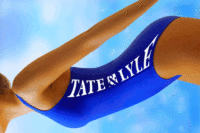Fiber is fiber. The key is to let consumers know that fiber is in their favorite foods and beverages.
Fiber is fiber. The key is to let consumers know that fiber is in their favorite foods and beverages. Tate & Lyle’s research found that consumers want healthier fare and believe fiber can help them reach their healthy living goals.
Many long-held misconceptions about fiber still exist. Here are five facts straight from consumers that Tate & Lyle found in its U.S. market research.
No. 1: Simple, Label-Friendly Terminology. When it comes to consumer understanding, promoting monikers such as insoluble fiber, soluble fiber and functional fiber with virtually no consumer education earn failing grades. In fact, research shows that less than 10% of consumers are familiar with each of these terms. On the other hand, consumers seem to have a greater affinity for simple terms – 75% are familiar with whole grains, 65% are familiar with fiber and 44% are familiar with dietary fiber.
No. 2: Whole Grains are Misleading. A great deal of confusion surrounds whole grains. Research found that more than half of consumers (55%) say the more whole grains in their food, the more fiber it contains. When they find out whole grains and fiber are not the same, consumers report feeling misled. Specifying fiber content on packages may help manufacturers continually build brand-loyalty while maintaining credibility.
No. 3: On-Pack Information Helps Sales.Ingredient information, particularly about fiber, on packages has been shown to positively influence consumer purchases. The company’s research found that nearly 50% of consumers trust on-pack information about fiber. That’s more than they trust friends, the Internet, in-store information, word of mouth or manufacturers ads. Information Resources Institute (IRI) found that another 60% like the idea of placing healthy product indicators on packages. The bottom line: To help gain a bigger share of your category, the front package is prime real estate. Using it may help convert dietary fiber and health information into cash for your company.
No. 4: Taste is an Opportunity.It’s no secret. Great-tasting food and beverages maintain loyal followers. With 57% of consumers seeking healthier products these days, manufacturers integrating good taste with health benefits may see a boost in the health of their bottom lines. In fact, nearly 50% of consumers believe fiber-rich food and drinks can taste good.
No. 5: Fiber Means Healthy Digestion. Seventy-nine percent of consumers agree – maintaining digestive health is directly related to including fiber in their diets. And, 52% of consumers believe healthy digestion is the most important reason to add fiber to their diets. Consumers believe other benefits exist as well. Fifty-three percent agree that weight is affected by fiber intake and another 35% say fiber helps support a healthy immune system.
Tate & Lyle’s proprietary consumer research was conducted in the United States by Illuminas, an internationally recognized consumer research agency. The research is a combination of qualitative and quantitative studies, including an online survey with a sample of more than 4,400 adults.
Tate & Lyle is a world-leading renewable food and industrial ingredients company, serving a global market from more than 45 production facilities throughout the Americas, Europe and South East Asia.
www.tateandlyle.com
Get our new eMagazine delivered to your inbox every month.
Stay in the know on the latest dairy industry trends.
SUBSCRIBE TODAYCopyright ©2024. All Rights Reserved BNP Media.
Design, CMS, Hosting & Web Development :: ePublishing


